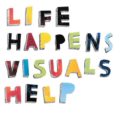
Pair Text with Visuals to Increase Comprehension
When students are early readers they use pictures to support understanding of the text; Informational texts and adolescent novels rarely... View Article

Use Sentence Starters to Prompt Writing and Discussion
Students will often benefit from sentence starters in order to guide their organization, jump start their thinking, or promote positive... View Article

Prove Understanding with Student Self-made Quiz
Give students the opportunity to show what they know by creating their own quizzes at the end of a unit,... View Article

Provide “Road Maps” to Support Informational Text
When using informational text, provide a guide for your students by annotating on the document or with a separate supporting... View Article

Offer Choice Among Readings
When teaching in a content area, consider using several text options that touch on the same topic and allow your... View Article

Write Directions and Steps as Checklists
Numbered, sequential directions may benefit students who have difficulty with getting started, sustaining a task or organizing work. Students can... View Article

Use “Listen for…” Cards
“Listen for…” cards during instruction can be used to highlight important points for students or to help a student sustain... View Article

Provide Audio Versions of Books
Students who are not fluent readers or who are reading below grade level may benefit from access to grade level... View Article

Provide Magnifying and Colored Overlays
Allow students to use magnifying or color-changing overlay sheets in order to accommodate low vision or visual processing differences. Example:... View Article

Turn on/Install Text-to-Speech
There are a wide range of free technologies that teachers can use to allow for text-to-speech across technologies. For Example:... View Article

Use Easy-to-Read Fonts
When creating classroom materials, use fonts that are not difficult to read. Example: Some fonts have been identified as being... View Article

Install Plugins for Chrome that Customize Display
Google Chrome offers free plugins that allow users to customize the display of text and images, allowing greater access to... View Article

Enable Captions for Auditory Text
By giving a visual alternative to auditory text, teachers can support the perceptual needs of diverse learners. Example: Enabling closed... View Article

Use Concept Maps to Assess Before Instruction
Teachers can assess student awareness of concepts and key terms before beginning instruction by asking students to map out the... View Article

Use Fill-in-the-Blank Note Taking
Give students an outline with some words missing to help keep students on task and promote comprehension. Example: During a lecture... View Article

Use Do Now’s to Access Prior Knowledge
Frame your Do Now so that it provides an opportunity for students to access what they already know about the... View Article
Install the Translation Plugin for Google Chrome
Allow students to translate webpages between languages to maximize access. Example: A student who is an English Language Learner may... View Article

Do Guided and Shared Readings Together
Readings are “shared” aloud with pauses for students to process. Example: A short passage is read to a class with... View Article

Use Mnemonic Devices to Support Recall
Use mnemonic devices to support memorization of key content material when necessary. Example: Teachers can use strategies such as poems,... View Article